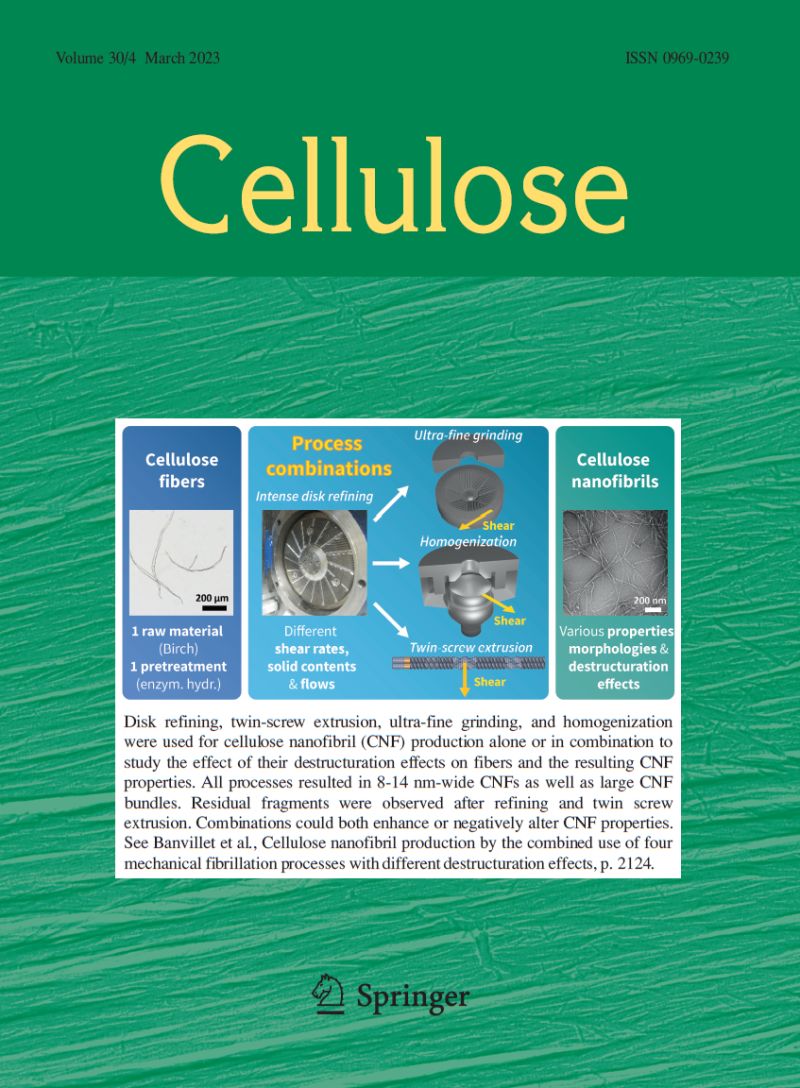Numerical investigation of heat transfer mechanisms in microfibrillated cellulose cryogels: effects of concentration, porosity, and thickness
Abstract
Cellulose cryogels are promising 3D structures for thermal insulation due to their low thermal conductivity and high porosity. However, there is only a few theoretical studies on their heat transfer mechanisms. In this study, we developed a three-dimensional model to investigate the heat transfer mechanism of microfibrillated cellulose cryogels (MFCCs). The accuracy of our model was validated by the high consistency between the experimental and simulation results, with a maximum difference of only 7.8% in thermal conductivity. Based on the numerical simulation method, the temperature distribution, solid phase and gas phase heat transfer inside the MFCCs were calculated. Our findings indicated that the heat flux transferred through the skeleton gradually improved as the MFC concentration increased, while the heat flux transferred through the air almost remained at a constant value. A detailed numerical parametric study was further conducted to explore the influence of porosity and thickness on heat transfer through MFCCs. Our results demonstrated that the heat flux and thermal conductivity of the cryogels had a negative linear correlation with the porosity. In addition, the heat flux through the MFCCs was found to initially decrease significantly with increasing thickness, after which the decreasing trend of the heat flux slowed down.

 求助内容:
求助内容: 应助结果提醒方式:
应助结果提醒方式:


